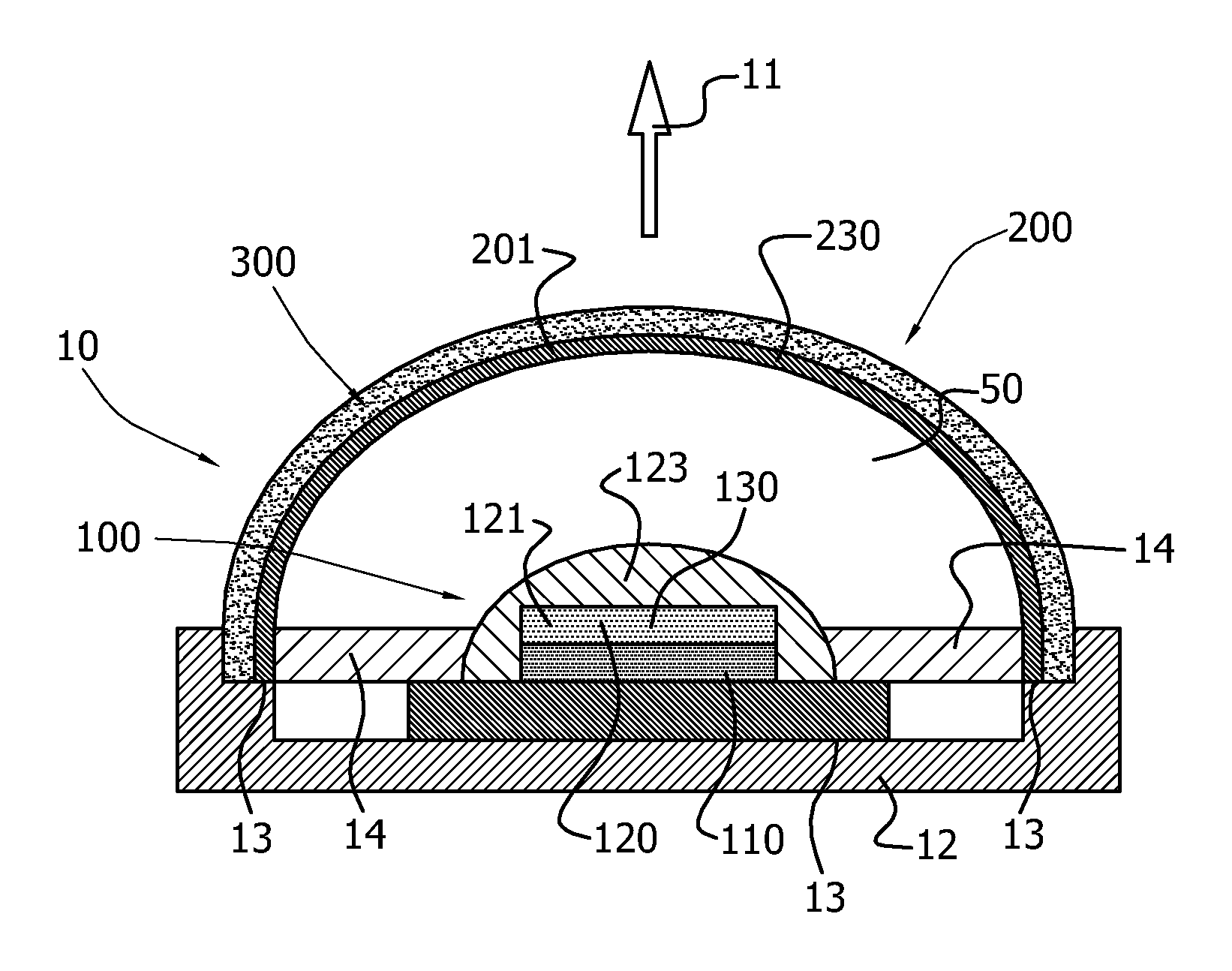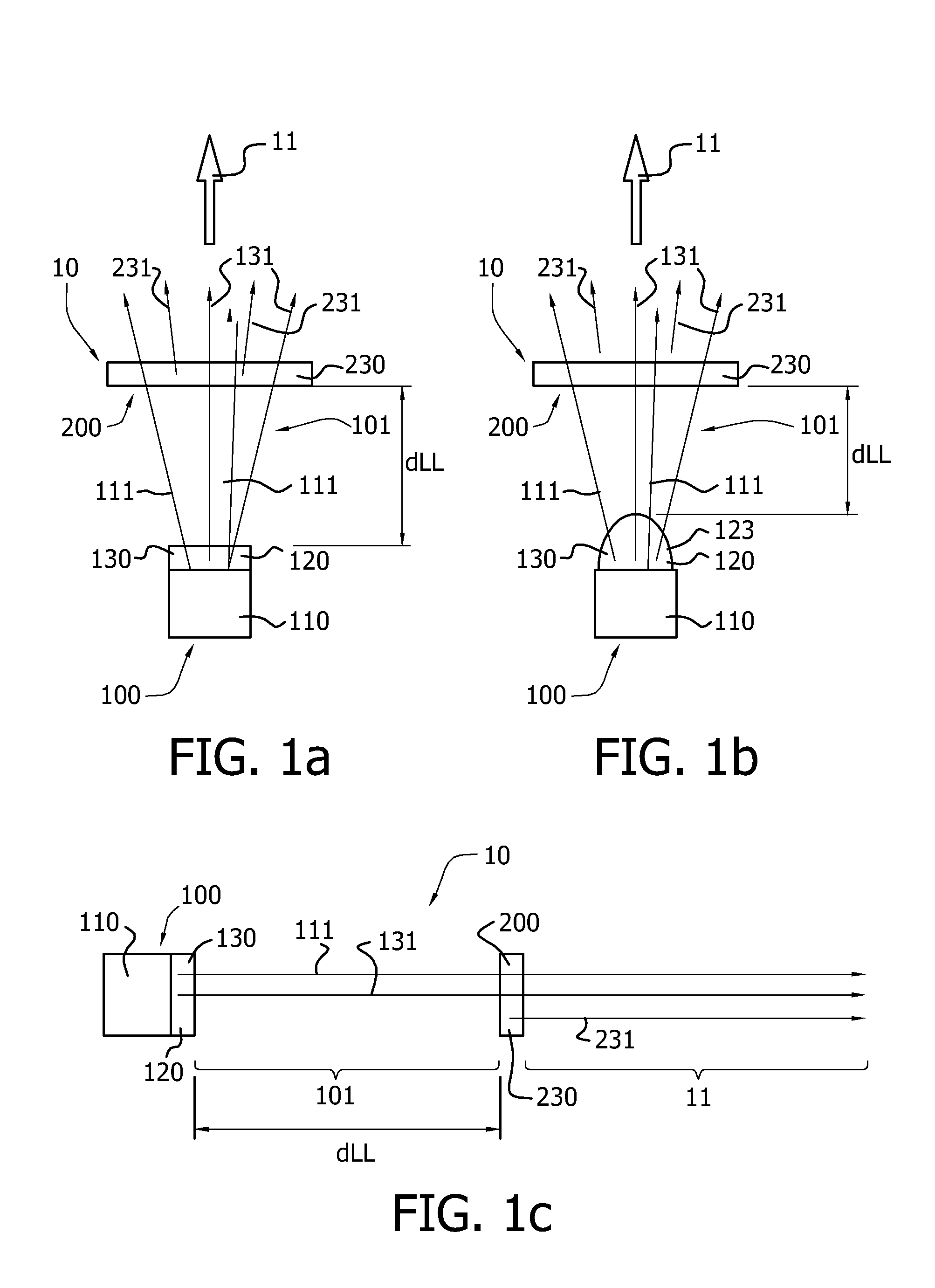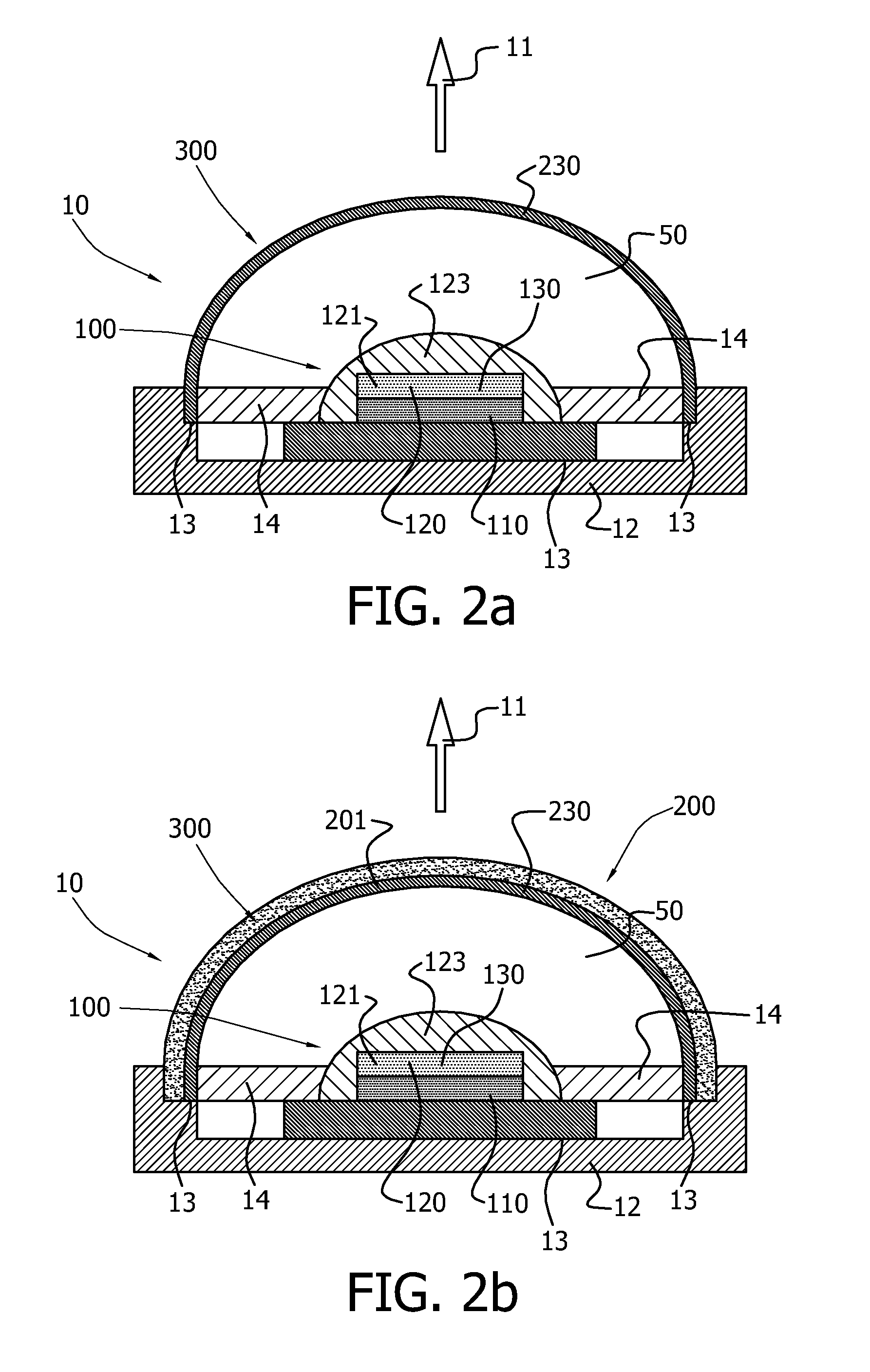Illumination device with remote luminescent material
a luminescent material and illumination device technology, applied in semiconductor devices, point-like light sources, lighting and heating apparatuses, etc., can solve the problems of limited size of emitting sources, high brightness of sources, and inability to fit remote luminescent material modules in spot lamps, etc., to reduce system efficiency, reduce lifetime, and high brightness of sources
- Summary
- Abstract
- Description
- Claims
- Application Information
AI Technical Summary
Benefits of technology
Problems solved by technology
Method used
Image
Examples
Embodiment Construction
[0092]FIGS. 1a-1c schematically depict embodiments of an illumination device 10 according to the invention. The illumination device 10 comprises a light source 100 and a transmissive arrangement 200, remote from the light source 100. The light source 100 is arranged to generate light source light 101, and comprises a light emitting device (LED) 110, arranged to generate LED light 111 and a carrier 120 comprising a first luminescent material 130. The carrier 120 is in contact with the LED 110. The first luminescent material 130 is arranged to convert at least part of the LED light 111 into first luminescent material light 131.
[0093]The transmissive arrangement 200 of a second luminescent material 230 is arranged remote from the light source 100 and is arranged to convert at least part of the LED light 111 or at least part of the first luminescent material light 131, or at least part of the LED light 111 and at least part of the first luminescent material light 131 into second lumines...
PUM
 Login to View More
Login to View More Abstract
Description
Claims
Application Information
 Login to View More
Login to View More - R&D
- Intellectual Property
- Life Sciences
- Materials
- Tech Scout
- Unparalleled Data Quality
- Higher Quality Content
- 60% Fewer Hallucinations
Browse by: Latest US Patents, China's latest patents, Technical Efficacy Thesaurus, Application Domain, Technology Topic, Popular Technical Reports.
© 2025 PatSnap. All rights reserved.Legal|Privacy policy|Modern Slavery Act Transparency Statement|Sitemap|About US| Contact US: help@patsnap.com



